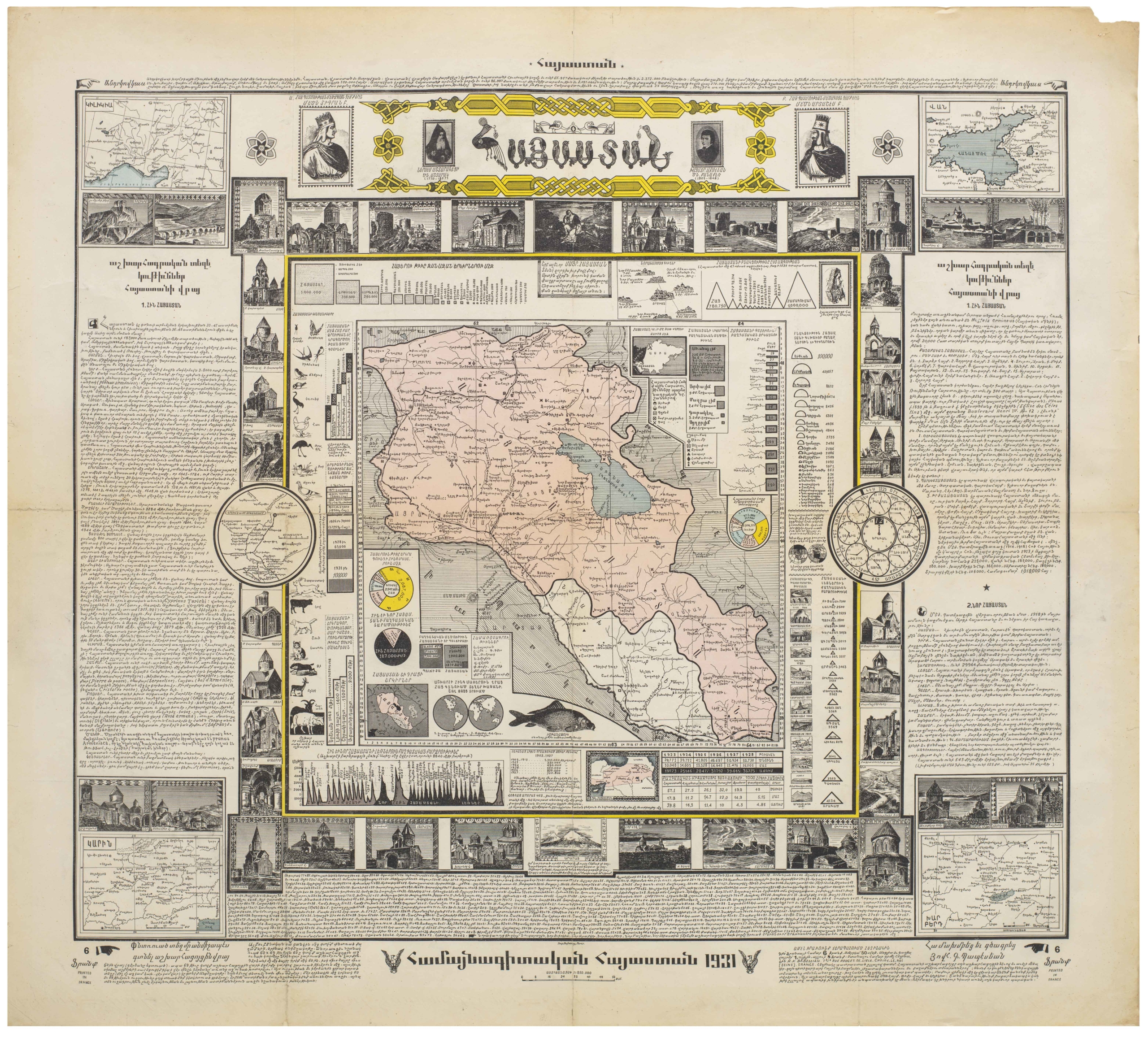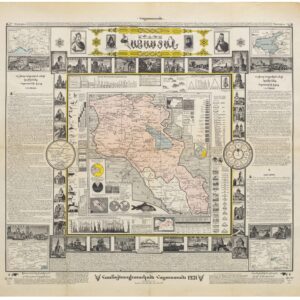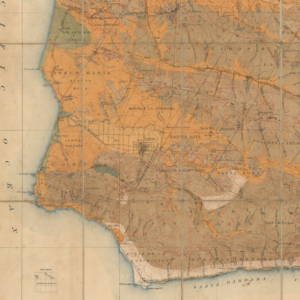The first plate from the world’s first sea atlas.
Tabula Anemographica seu Pyxis Nautica.
Out of stock
Description
This is an excellent example of Jansson’s beautifully engraved and hand-colored wind rose chart, one of the first in that map genre and a significant navigational advance for sailors.
Using the 32 points of the compass rose developed by sailors and navigators in the Middle Ages; each point is associated with a line labeled in Greek, Latin, Italian, Portuguese, French, and Dutch and degrees separated at intervals of 90 as well as degrees running 360 from the north. The cardinal directions are labeled in all caps with lines running towards the top-left (north), top-right (east), bottom-right (south), and bottom-left (west). Heads representing the different races of the world blow winds around the perimeter of the chart, with larger heads at the ends of the lines for the cardinal directions. Despite its aesthetic qualities, this chart was used as a reference, evidenced by its detail and inclusion of the six languages, as extant pilot books or other navigational tools could easily be in any of these languages.
Wind Rose Charts
This map was one of the earliest published wind charts, which are graphical representations of wind data showing various attributes of wind, such as direction, speed, frequency, and patterns over a specific period and location. The present map is more specifically a wind rose chart, also known as an anemographic chart, which is a circular diagram showing the frequency of winds blowing from different directions. Each “spoke” on the rose represents a wind direction, and the length of each spoke indicates the frequency or speed of the wind from that direction.
Publication information
This map appeared as the first plate in Jannson’s Atlantis Majoris, the fifth volume of Jansson’s Atlas Novus. The first part of the Atlantis Majoris is also known as the Atlas Maritimus. A ground-breaking work, it was the first true sea atlas. This example is distinguished by its very good condition and gorgeous hand coloring.
Cartographer(s):
Johannes Janssonius (1588 – 1664; born Jan Janszoon, also Jan Jansson) was a Dutch cartographer and publisher who lived and worked in Amsterdam in the 17th century. Janssonius was born in Arnhem, the son of Jan Janszoon the Elder, a publisher and bookseller. In 1612 he married Elisabeth de Hondt, the daughter of Jodocus Hondius. He produced his first maps in 1616 of France and Italy.
In the 1630s, Janssonius formed a partnership with his brother-in-law Henricus Hondius; they published atlases as Mercator/Hondius/Janssonius. Under the leadership of Janssonius, the Hondius Atlas was steadily enlarged. After Janssonius’s death, the publishing company was continued by his son-in-law, Johannes van Waesbergen. The London bookseller Moses Pitt attempted publication of the Atlas Major in English but ran out of resources after the fourth volume in 1683.
Condition Description
Very good. Excellent old color.
References
![[LA ROCHELLE] Il vero sito della Rocella hora occupata da heretici et Ribelli di sua Maestà Christianissima della Quale sono Assediati.](https://neatlinemaps.com/wp-content/uploads/2022/11/NL-01639_thumbnail-scaled-300x300.jpg)
![[LA ROCHELLE] Il vero sito della Rocella hora occupata da heretici et Ribelli di sua Maestà Christianissima della Quale sono Assediati.](https://neatlinemaps.com/wp-content/uploads/2022/11/NL-01639_thumbnail-scaled.jpg)




![Das Jahr der Kirche [The Year of the Church]](https://neatlinemaps.com/wp-content/uploads/2022/09/NL-01244_thumbnail-1-300x300.jpg)
![Das Jahr der Kirche [The Year of the Church]](https://neatlinemaps.com/wp-content/uploads/2022/09/NL-01244_thumbnail-scaled.jpg)
![Das Jahr der Kirche [The Year of the Church]](https://neatlinemaps.com/wp-content/uploads/2022/09/NL-01244_thumbnail-scaled-300x300.jpg)